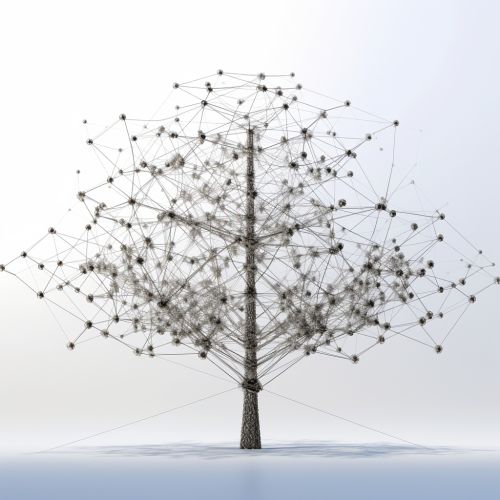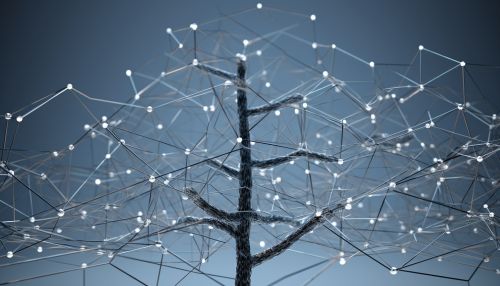Tree (graph theory)
Introduction
In the field of graph theory, a tree is a special type of graph that has no cycles and is connected. This means that there is exactly one path between any two vertices in the tree. Trees are fundamental structures in graph theory and have been extensively studied due to their wide range of applications in computer science, biology, and other fields.
Definition
Formally, a tree is defined as an undirected graph in which any two vertices are connected by exactly one path. Alternatively, a tree can be defined as a connected acyclic graph, or a graph with N nodes and N-1 edges.
Properties
Trees have many interesting properties that distinguish them from other types of graphs. Some of these properties include:
- Uniqueness of path: In a tree, there is exactly one path between any two vertices. This property is often used in algorithms that traverse a tree, such as depth-first search or breadth-first search.
- Acyclicity: A tree is an acyclic graph, meaning it has no cycles. This property is used in many algorithms that operate on trees, such as those for finding the shortest path between two vertices.
- Minimality: A tree is a minimal connected graph, in the sense that removing any edge from the tree will disconnect it.


Types of Trees
There are several types of trees that are commonly studied in graph theory. These include:
- Binary Trees: A binary tree is a tree in which each node has at most two children, often referred to as the left child and the right child.
- Rooted Trees: A rooted tree is a tree in which one vertex has been designated as the root. The edges of a rooted tree can be directed away from or towards the root, making it a directed graph.
- Ordered Trees: An ordered tree, also known as a plane tree, is a rooted tree in which the children of each vertex are given a fixed left-to-right order.
- Balanced Trees: A balanced tree is a binary tree where the difference between the heights of any two subtrees of any node is at most one.
Algorithms involving Trees
There are many algorithms in computer science that involve trees. Some of these include:
- Tree Traversal Algorithms: These algorithms are used to visit each node in a tree in a particular order. Examples include depth-first search (DFS), breadth-first search (BFS), and in-order, pre-order, and post-order traversals.
- Minimum Spanning Tree Algorithms: These algorithms are used to find a tree that connects all vertices in a graph and has the smallest possible total edge weight. Examples include Kruskal's algorithm and Prim's algorithm.
- Shortest Path Algorithms: These algorithms are used to find the shortest path between two vertices in a graph. Examples include Dijkstra's algorithm and the Bellman-Ford algorithm.
Applications of Trees
Trees have many applications in various fields. Some of these include:
- Computer Science: Trees are used in many areas of computer science, including data structures, algorithms, and network routing.
- Biology: In biology, trees are used to represent evolutionary relationships in phylogenetics.
- Linguistics: In linguistics, trees are used to represent the structure of sentences in syntax trees.
- Chemistry: In chemistry, trees are used to represent the structure of chemical compounds.
